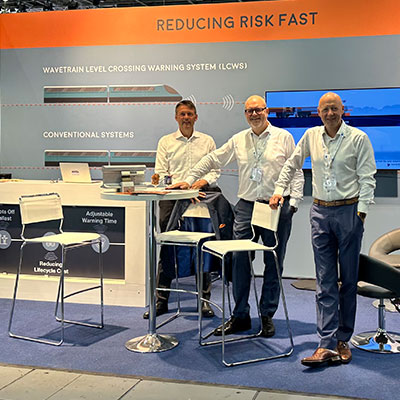
Book a Demo
Thank you for your interest in Wavetrain Systems!
One of our team members will be in touch shortly to schedule a meeting. We look forward to showing you how we can help you mitigate risks and upgrade your level crossings in a smarter, more effective way.
We use cookies By using this site, you are consenting to our use of cookies in accordance with this Cookies & Privacy Policy.
© Copyright 2025 by Wavetrain Systems


